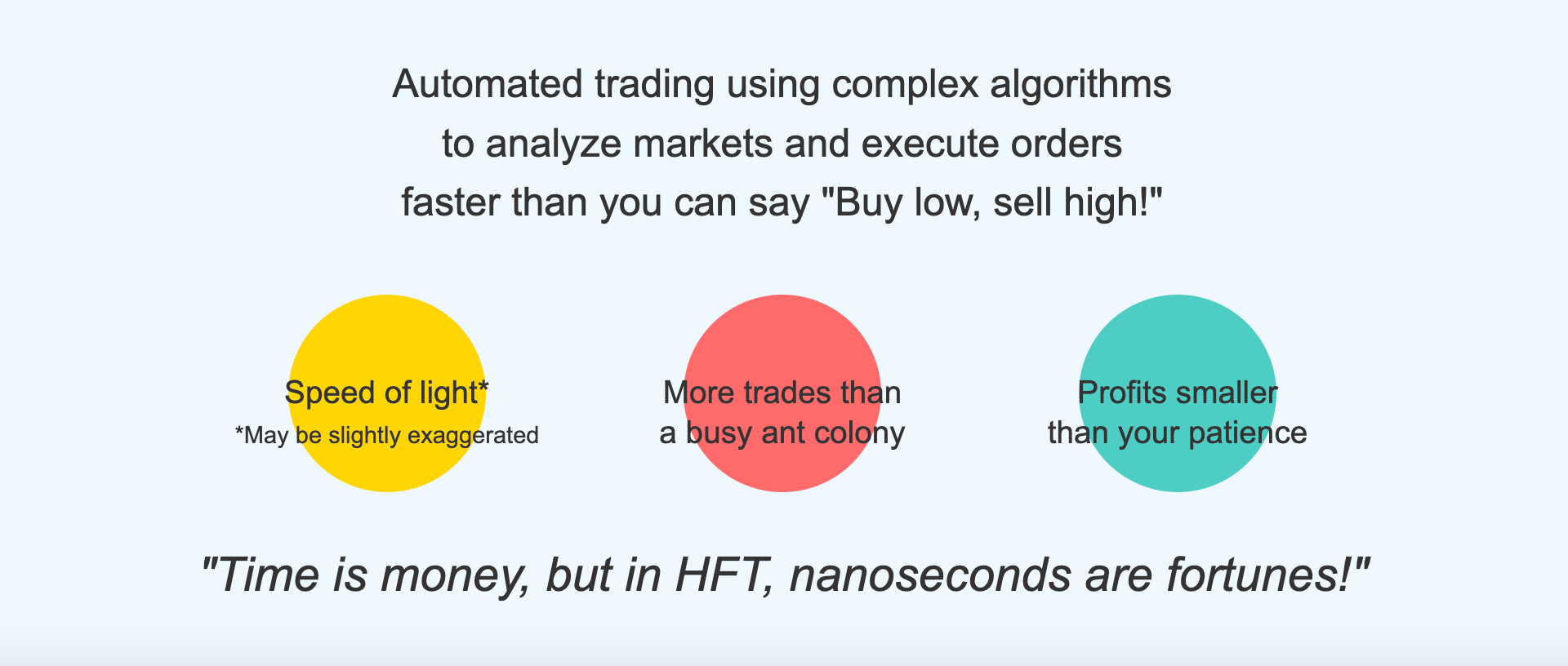Executive Summary
High-frequency trading (HFT) leverages advanced algorithms and ultra-low-latency infrastructure to execute thousands of trades in microseconds, capitalizing on small price discrepancies in highly liquid markets. HFT strategies for Ametheus USA Corporation Inc. and Ametheus Holdings Pvt Ltd across blue chip stocks, petroleum oil, and forex, aligning with our interests in crude oils (e.g., Basrah Heavy, Kuwait Export Crude), diesel, and infrastructure plans (e.g., $100M SBLC monetization, KDB, FPGA edge nodes). It includes market-specific strategies, implementation steps, and actionable recommendations to maximize profitability while ensuring regulatory compliance.
Technology usable in HFT:
Airflow
Google Cloud (Spanner, BigQuery)
KDB
Kubernetes
MongoDB
Python (Pandas, NumPy, Dask)
React
JavaScript
NodeJS
Overview of HFT
HFT involves executing large volumes of trades at high speeds to exploit minute price inefficiencies. Key characteristics include:
Speed: Trades executed in microseconds via co-located servers and low-latency networks.
Volume: Thousands to millions of daily trades, profiting from small price movements (e.g., $0.01–$0.05 per trade).
Short Holding Periods: Positions held for milliseconds to seconds, minimizing risk exposure.
Technology: Requires proprietary algorithms, real-time data feeds (e.g., Bloomberg, Reuters), and hardware like FPGA edge nodes.
Strategies: Market making, statistical arbitrage, momentum trading, and event-driven trading.
HFT in Target Markets
1. Blue Chip Share Market
Blue chip stocks are ideal for HFT due to high liquidity and tight spreads.
Strategies:
-
-
Market Making: Place simultaneous buy/sell orders to capture spreads (e.g., ₹0.10–₹0.50 on NSE for Reliance).
-
Statistical Arbitrage: Exploit price differences between correlated stocks (e.g., HDFC Bank vs. ICICI Bank) or stocks and ETFs (e.g., NIFTY 50 ETF).
-
Momentum Trading: Trade on short-term price movements driven by news or sentiment, using real-time data.
-
Exchanges: NSE, BSE (India); NYSE, NASDAQ (U.S.).
Profit Potential: High liquidity allows frequent trades with small profits (e.g., $0.01–$0.05 per share, 10,000 trades/day = $100–$500/day per stock).
2. Petroleum Oil Trading
Petroleum markets (crude and refined products like diesel, gasoline) offer HFT opportunities due to volatility and global liquidity.
Strategies:
-
-
Futures Arbitrage: Exploit price differences in oil futures (e.g., NYMEX WTI vs. ICE Brent, MCX diesel vs. DME).
-
Spread Trading: Trade crack spreads (crude vs. gasoline) or inter-market spreads (WTI vs. Brent).
-
Event-Driven Trading: Capitalize on OPEC announcements or geopolitical events (e.g., Middle East tensions affecting Basrah Heavy prices).
-
Exchanges: MCX (India), NYMEX, ICE (global), DME (Dubai).
Profit Potential: Trade 100-lot WTI futures (1000 barrels) for $0.01–$0.05/tick, yielding $10–$50/trade.
Challenges: Lower liquidity than equities; MCX volumes are smaller than NYMEX, limiting opportunities.
Context: Your interest in Basrah Heavy, Kuwait Export Crude, and diesel aligns with MCX diesel futures and NYMEX WTI/Brent trading.
3. Forex
The forex market ($7.5T daily volume) is highly liquid, operating 24/7, making it ideal for HFT.
Strategies:
-
-
Currency Pair Arbitrage: Exploit price differences in pairs (e.g., USD/INR on NSE, EUR/USD on CME) across platforms.
-
Latency Arbitrage: Trade on small price discrepancies (e.g., 0.1–0.2 pips in EUR/USD).
-
News-Based Trading: React to macroeconomic events (e.g., RBI rate changes, U.S. jobs data).
-
Exchanges/Platforms: NSE (USD/INR futures), CME, LMAX, Currenex.
Profit Potential: High-frequency trades on EUR/USD (0.1 pip spread) can yield $1–$5 per lot, with thousands of trades daily.
Challenges: SEBI restricts retail forex in India; institutional compliance is critical. High competition in global forex hubs.


